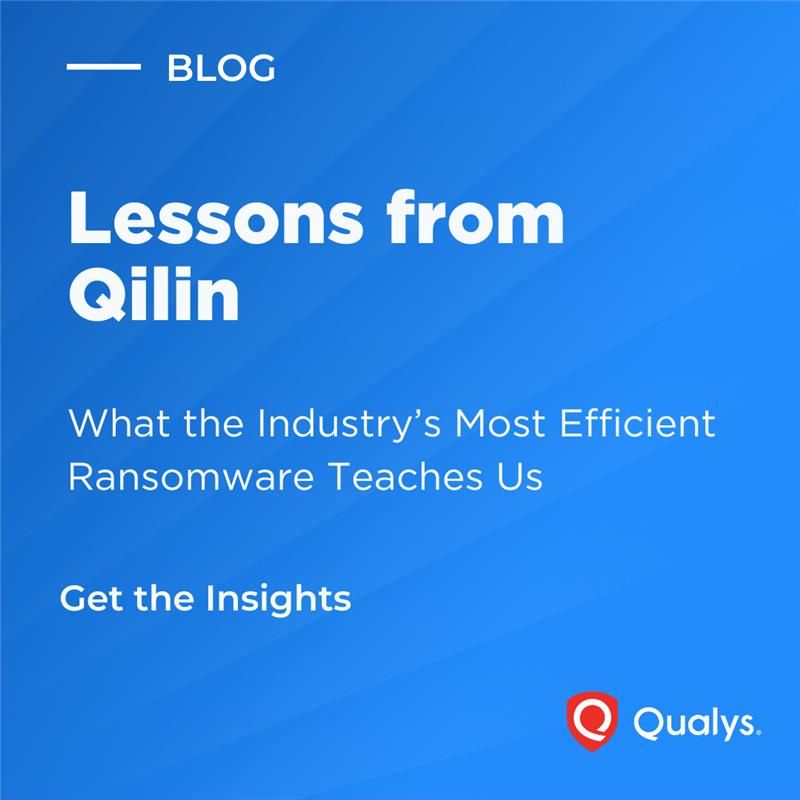Qualys
5d
73

Image Credit: Qualys
Lessons from Qilin: What the Industry’s Most Efficient Ransomware Teaches Us
- Qilin ransomware has become one of the most active and impactful operations worldwide, gaining popularity for targeted attacks and robust encryption tactics.
- Qilin amassed over $50 million in ransom payments in 2024 and is now recognized as the top ransomware threat globally.
- Qilin is associated with threat actor groups like Scattered Spiders and has expanded its use to various countries and industries, particularly targeting manufacturing, legal, and financial services.
- It strategically targets critical infrastructure and larger organizations with high payouts and utilizes advanced encryption techniques to make decryption almost impossible.
- Qilin also engages in double extortion, rapid encryption, data exfiltration, and addresses weaknesses in Windows system backups to force payouts.
- Recent Qilin variants include enhancements like Chrome Extension Stealer, security evasion tactics, and backup corruption to hinder recovery efforts.
- Proactive defense measures against Qilin include user awareness, incident response readiness, patch management, antivirus software, endpoint threat detection, network alerting, and immutable backups.
- Organizations are advised to implement strategies such as Zero Trust Architecture, threat mapping to defensive solutions, and a well-tested incident response plan to combat evolving ransomware threats.
- Qilin serves as a significant wake-up call for organizations to prioritize resilience and preparedness against sophisticated ransomware attacks like Qilin that can have devastating financial and operational impacts.
- Its methodical targeting, advanced encryption, and evasion techniques highlight the necessity for organizations to reevaluate their defense mechanisms and readiness in the face of rising ransomware threats.
- The article provides detailed insights into Qilin's history, operational model, encryption methods, and recommendations for strengthening defense strategies against ransomware attacks.
Read Full Article
4 Likes
For uninterrupted reading, download the app